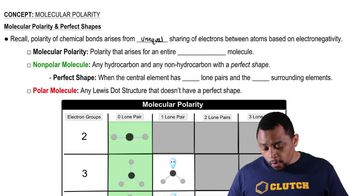Indicate the changes in secondary and tertiary structural levels of proteins for each of the following:
b. Prior to giving an injection, the skin is wiped with an alcohol swab.
 Verified step by step guidance
Verified step by step guidance Verified video answer for a similar problem:
Verified video answer for a similar problem:



 2:56m
2:56mMaster Summary of Protein Structure Concept 1 with a bite sized video explanation from Jules
Start learning